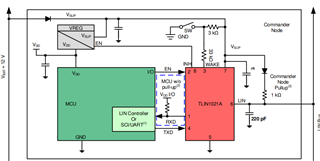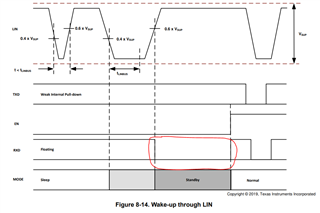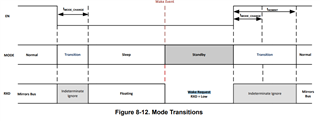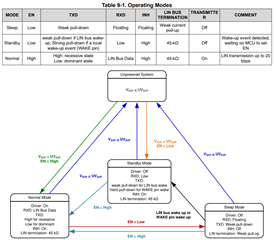Hi,
I am seeing an intermittent issue with this chip, the state-machine functionality seems to be poorly implemented and leads to undefined behaviour.
We are trying to deploy this on a product and it is being made very difficult by the intermittent operation of this chip.
The datasheet does not state, a basic set up of all pins to enable normal operation - the WAKE pin and WAKE functionality is impeding this chip from working and it seems to be operating in some undefined state and will NOT come out of Standby / Sleep mode despite all of our efforts.
Please update the datasheet and associated information for this chip to clearly define what pins states should be when their functionality is not used, for instance WAKE can be tied either HIGH or LOW to VSUP, as per information in on this forum - this information is however missing from the datasheet, which is poor as instructions go.
As per datasheet and information on these forums, I have made modifications to my PCBs that ties INH to GND through a 100k resistor, we were toggling the EN pin using a GPIO of a MSP430 associated processor, however I believe this was leading to timing issues as stated in the datasheet and the state-machine description, the EN pin should be enabled at start up, so I have cut the track and pulled it HIGH through a resistor to 3.3V, please advise whether this is still suitable, or whether it should be pulled directly to 3.3V, without a resistor.
We are sending an 11-bit low wake up request on start up, but the TLIN1021 does not come out of this indeterminate mode. I have measured the behaviour and Tx is being pulled HIGH, Rx is sitting LOW. We are currently experimenting with toggling our dominant LIN bus, to see if we can initiate a wake-up request, which by all other means seems to be ignored.
Pull-ups are enabled on MSP430 on the open drain Rx line, please advise if this is not acceptable, however we have 5/10 boards that work perfectly, and 5/10 boards that have this strange, intermittent, undefined state-behaviour, which I am currently convinced is a function of the overly complicated control system and state-machine that has been implemented into this device.
Please advise on how we can trouble-shoot this problem







